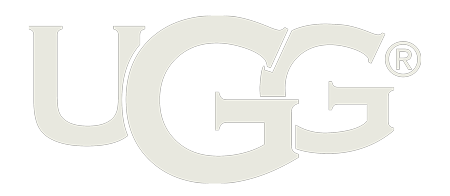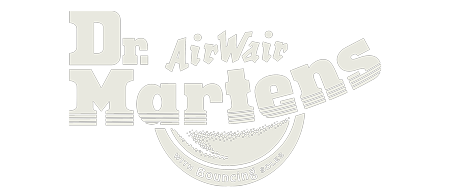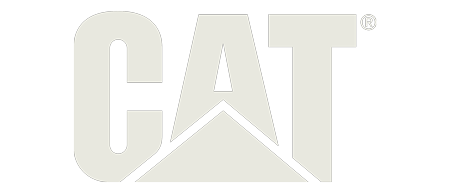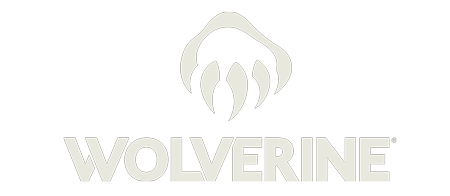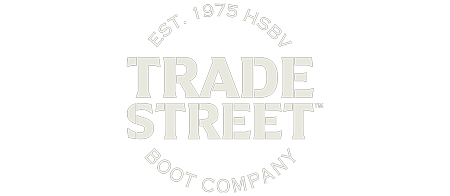Aug 12, 2020 /
OSHA: Everything You Need to Know

What is OSHA: Everything You Need to Know
If you're responsible for the well-being of your workforce, you've likely come across OSHA rules and regulations. But have you considered how safety standards and OSHA compliance, especially concerning the Department of Labor, intersect with your business? In the following sections, we'll delve into the purpose of OSHA, its impact on your operations, and how you can ensure compliance, including through the implementation of corporate footwear programs and other protocols—offered by none other than Boot World.
What is OSHA?
Before we get into the description of OSHA, let’s first answer the question: What does OSHA stand for? OSHA is the Occupational Safety and Health Administration.
What is OSHA?
After passing the Occupational and Safety Act of 1970 (OSH Act), Congress established the federal Occupational Safety and Health Administration (OSHA) to “ensure safe and healthful working conditions for working men and women by setting and enforcing standards and by providing training, outreach, education, and assistance.” Ultimately, each OSHA standard aims to improve workplace safety by reducing on-site:
- Fatalities
- Injuries
- Illnesses
- Hazards
How Does OSHA Work?
OSHA functions as part of the United States Labor Department, which is overseen by the Secretary of Labor. While the OSHA Act is a federal law, certain states have enacted their own OSHA laws to meet health standards and ensure a safe workplace. These state regulations precede those of the federal government. So, how it affects you as the employer depends on where your business operates.
Does OSHA Apply to You?
Rather than detailing who is covered by OSHA, the Occupational Health and Safety Act of 1970 chooses to specify who is exempt. From hospitality to healthcare, agriculture to architecture, if you have one or more employees, then you are obligated to adhere to OSHA regulations. An employee is anyone that you give a paycheck to but excludes the following:
- Independent contractors
- Self-employed business owners
- Freelancers
- Churches
- Family-run farms
- Federal employers and employees
While OSHA monitors both public and private sector employees, OSHA cannot fine federal agencies.
Moreover, if you oversee staff with another employee, you will need to select one of you to be held liable for your employees. Left to OSHA, the responsibility will be placed on the individual who:
- Has the ability to determine employees’ duties
- Has the power to change conditions of employment
- The employees view as their employer
- Manages employee payroll
In other words, OSHA will apply to protect employees. To whom it applies, is dependent on the individual business.
What Are OSHA Requirements?
As previously stated, the agency has established guidelines for businesses to help safeguard the health and physical well-being of workers. OSHA’s primary form of prevention is through education and safety training.
Wondering exactly what OSHA standards are? Employers in any general industry are required to cover these primary elements:
- Hazardous Chemicals and Materials
- First Aid Procedure
- Fire and Emergency Protocol
- Informational Posters
- Documentation Requirements
All hazardous substances come with a Material Safety Data Sheet from the manufacturer. These hazard communication sheets should be made available for your employees to access and refer to whenever needed. You are responsible for identifying these substances, informing workers on how to handle them, and how to treat injuries from them.
First Aid Procedure
OSHA requires that each worker be provided with information on first-aid procedures. Those with occupational exposure to blood-borne pathogens must receive information and personal protective equipment against such diseases that may be carried through bodily fluids. That being said, it’s best practice for all employees to know how to safely deal with bodily fluids in case of an emergency.
Fire and Emergency Protocol
OSHA also stipulates that you must provide employees training on how to deal with fires, firefighting safety equipment, and an evacuation route. Moreover, you need to create an emergency protocol and establish a training program for your employees to ensure occupational safety in the workplace.
If you have less than ten employees, then you can communicate the protocol orally. If you have more than ten employees, then it must be written and available for employees to review as needed.
Documentation Requirements
You are legally obligated to report incidents to the OSHA office nearest you. Workplace injuries and fatalities must be reported in every instance, without exception.
Documentation Exceptions
Further exemptions may be applicable for record-keeping. Any business with less than ten employees, unless mandated by the Bureau of Labor or OSHA, is not required to keep records of illness or injury. Low-hazard companies may also be partially exempt and not need to maintain records if they meet OSHA standards. Industries that may qualify for partial exemption include:
- Finance
- Real estate
- Insurance
- Retail
Informational Posters
Workers must know their rights. Safety signs and posters must be OSHA-compliant to avoid OSHA violations in the workplace. If you’d rather not worry about the regulations regarding what must be included, you can order a poster directly from OSHA.
Workers’ Rights
According to OSHA’s official website, workers’ rights include the following:
- Receive training in a language your worker understands
- File complaints concerning health and safety violations
- Report workplace injuries or illnesses, along with copies of medical records
- Operate safe machines
- Be provided any required safety gear and protective equipment
- Protection from hazardous chemicals
- Request an inspection by OSHA and to speak to the inspector about workplace health and compliance
- View copies of injury and illness logs from previous workplace accidents
- Review work-related injuries and illnesses records
- Access copies of test results done to find hazards in the workplace
Why Should You Care?
Before the passage of the OSHA Act, there was no federal legislation in place protecting safety against health hazards in the workplace. In the 1960s, up to 14,000 workers were dying each year, and over 2.2 million were unable to work due to a work related injury or illness. Since then, workplace fatalities have reduced by 60%, and occupational injury and illness rates are down 40%.
While certain elements may seem bothersome to adhere to, by adhering to OSHA’s requirements on worker safety, you are ensuring that your employees are safe, and in turn, that your business can continue operating productively and efficiently. Additionally, it’s worth noting that should an incident occur, OSHA will consider whether any preventative measures were in place to protect workers’ safety, or if you as the employer have been negligent.
The Risks
The price of injuries—both those that occur in the workplace and elsewhere—is immense. The National Safety Council reports that the cost of injuries in the United States totaled $1,225.4 billion in 2021. And while slips and falls are not a primary cause of fatal occupational injuries, they do represent the leading cause of lost days from work, according to the National Floor Safety Institute.
A person’s feet are inordinately susceptible to injury in any general industry, and the more physical labor a job requires—walking, standing, operating machinery, lifting goods, etc.—-the greater the danger your workers face. With this in mind, it’s essential to pay particular attention to how you can protect your employees' feet, as these injuries can cause permanent disability and impact job performance as well as walking abilities even after recovery.
Common Hazards
You are responsible for creating a safe and healthy working environment for your employees. Wondering which warehouse safety tips you should follow? Prevent a fine, minimize potential dangers, and help your business thrive by avoiding these typical hazards:
- Anti-fatigue mats: Although designed with good intentions, the raised surface can cause workers to trip.
- Foot pain: A Harvard study has connected foot pain to sluggish strides and imbalance—a combination destined for a fall or stumble.
- Unsafe flooring: Whether workers’ shoes lack traction on a smooth floor or walk on uneven terrain, the ground itself can pose a significant risk.
How to Implement Safeguards
By actively promoting foot safety, you can circumvent plenty of potential workplace accidents and mishaps. Consider implementing a few compliance protocols to minimize unsafe behavior, including these workplace safety tips:
- Emphasize Quality Over Quantity: When you prioritize quality work over rapid service, workers will not feel the need to rush and, in their haste, accidentally place themselves at risk. This policy will inevitably be more advantageous for your service or product in the end.
- Enforce Mandatory Breaks: A tired worker is less likely to make mistakes. A chance to rest one’s feet will reduce strain and encourage good circulation. Both a mental and physical break help prevent fatigue and boost productivity as a part of occupational health.
- Cultivate a Pleasant Work Environment: Further decrease foot pain and its associated injuries by creating a workplace that doesn’t add unnecessary stress to your hard-working employees’ days.
- Keep it Clean: Anywhere employees work or traverse should be kept clean and clear to prevent trips as a form of fall protection. Clutter can contribute to delayed production as well as pose potential dangers.
Protective Footwear
For any occupation requiring mobility, proper shoes can be a simple but worthy investment. Quality men’s and women’s work shoes can address all of the previously listed dangers if they feature:
- Supportive insoles
- Slip-resistant soles
- Insulation
- Safety toes
- Waterproof or water-resistant material
Promote foot protection and safety enforcement for your workers’ day-to-day operations with Boot World’s vast selection of footwear.
Putting Your Best Foot Forward
It doesn’t take much to ensure you and your team are protected, especially with our Boot World Corporate Footwear Program, designed for professionals that need the ultimate performance and service. With a discount, voucher program, and different payment plans, Boot World offers an accessible form of ensuring employee safety.
The added convenience of our Mobile Footwear Store also allows you to maximize efficiency and productivity in a few minutes. We’ll set up shop right outside your business, so your workers can get appropriate gear and work safely, without an interruption in your busy schedule.
Footwear is clearly an essential component of protective gear. Don’t risk your time, money, nor your employees’ safety. Keep federal OSHA and your employees happy with shoes that’ll work just as hard as they do.
Sources:
Chron. What Companies Are Required to Meet OSHA Regulations?
https://smallbusiness.chron.com/companies-required-meet-osha-regulations-66435.html
EHS Today.The Hazards Affecting Your Employees’ Foot Safety.
https://www.ehstoday.com/ppe/foot-protection/article/21919755/the-hazards-affecting-your-employees-foot-safety
Small Business. What Employers Need to Know About OSHA.
https://www.thebalancesmb.com/what-is-osha-what-do-employers-need-to-know-about-it-398385
Reviewed By:
Ed Stone brings over 45 years of footwear knowledge and passion to his role as President of Boot World, a family-owned company and an industry leader in safety and occupational footwear. A second generation "shoe dog” Ed's footwear knowledge is unparalleled, serving as an informal advisor for some of the worlds largest footwear brands including Wolverine, Timberland PRO, and Reebok Works.
A lifelong Southern California resident, and ardent conservationist, Ed enjoys hiking and open water swimming.



